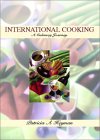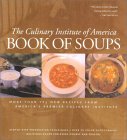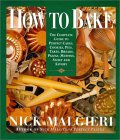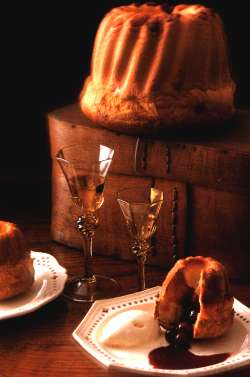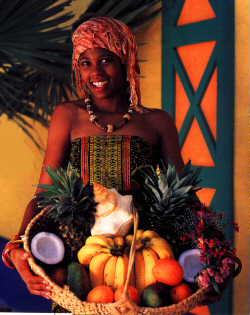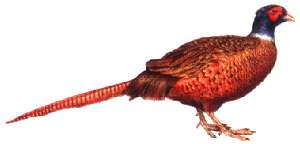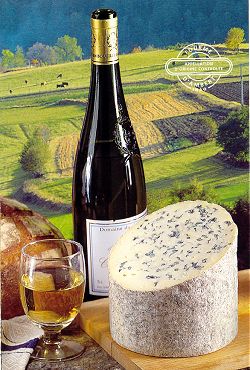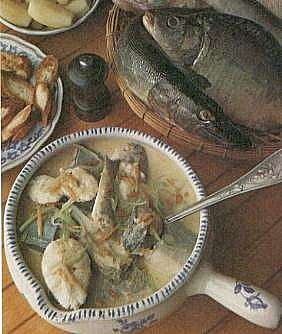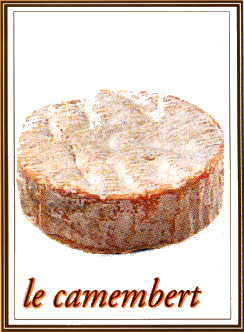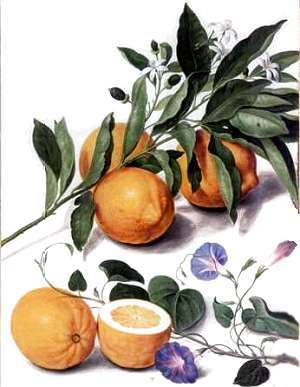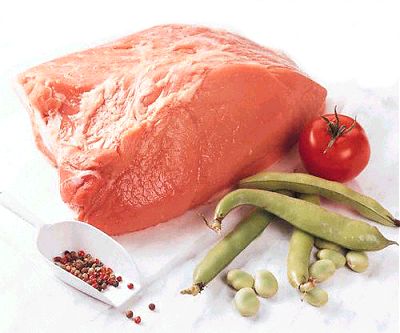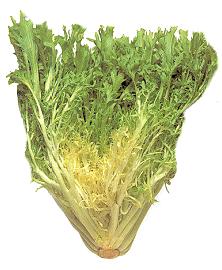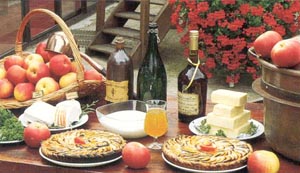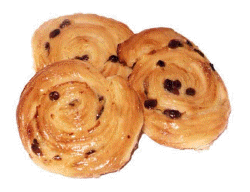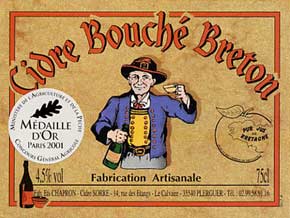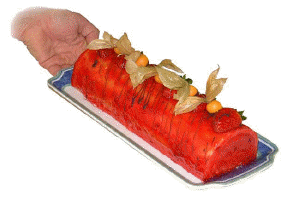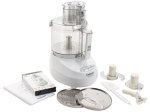
Cuisinart DLC-2014 PowerPrep Plus 14-Cup ... A Cook's Dream Machine
The Boston Cooking-School Cook Book
Fannie Farmer
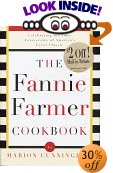 
This classic American cooking reference includes 1,849 recipes, including everything from "after-dinner coffee"-which Farmer notes is beneficial for a stomach "overtaxed by a hearty meal"-to "Zigaras à la Russe," an elegant puff-pastry dish.
"Cookery means the knowledge of Medea and of Circe and of Helen and of the Queen of Sheba.… It means much testing and no wasting; it means English thoroughness and French art and Arabian hospitality; and, in fine, it means that you are to be perfectly and always ladies-loaf givers."
Ruskin
SALADS, which constitute a course in almost every dinner, but a few years since seldom appeared on the table. They are now made in an endless variety of ways, and are composed of meat, fish, vegetables (alone or in combination) or fruits, with the addition of a dressing. The salad plants, lettuce, watercress, chiccory, cucumbers, etc., contain but little nutriment, but are cooling, refreshing, and assist in stimulating the appetite. They are valuable for the water and potash salts they contain. The olive oil, which usually forms the largest part of the dressing, furnishes nutriment, and is of much value to the system.
1
Salads made of greens should always be served crisp and cold. The vegetables should be thoroughly washed, allowed to stand in cold or ice-water until crisp, then drained and spread on a towel and set aside in a cold place until serving time. See Lettuce, page 294. Dressing may be added at table or just before sending to table. If greens are allowed to stand in dressing they will soon wilt. It should be remembered that winter greens are raised under glass and should be treated as any other hothouse plant. Lettuce will be affected by a change of temperature and wilt just as quickly as delicate flowers.
2
Canned or cold cooked left-over vegetables are well utilized in salads, but are best mixed with French Dressing and allowed to stand in a cold place one hour before serving. Where several vegetables are used in the same salad they should be marinated separately, and arranged for serving just before sending to table.
3
Meat for salads should be freed from skin and gristle, cut in small cubes, and allowed to stand mixed with French Dressing before combining with vegetables. Fish should be flaked or cut in cubes.
4
Where salads are dressed at table, first sprinkle with salt and pepper, add oil, and lastly vinegar. If vinegar is added before oil, the greens will become wet, and oil will not cling, but settle to bottom of bowl.
5
A Chapon. Remove a small piece from end of French loaf and rub over with a clove of garlic, first dipped in salt. Place in bottom of salad bowl before arranging salad. A chapon is often used in vegetable salads, and gives an agreeable additional flavor.
6
To Marinate. The word marinate, as used in cookery, means to add salt, pepper, oil, and vinegar to a salad ingredient or mixture, then allow to let stand until well seasoned.
Macédoine Salad
Marinate separately cold cooked cauliflower, peas, and carrots cut in small cubes, and outer stalks of celery finely cut. Arrange peas and carrots in alternate piles in centre of a salad dish. Pile cauliflower on top. Arrange celery in four piles at equal distances. At top of each pile place a small gherkin cut lengthwise in very thin slices, beginning at blossom end and cutting nearly to stem end. Open slices to represent a fan. Place between piles of celery a slice of tomato.
46
Almost any cold cooked vegetables on hand may be used for a Macédoine Salad, and if care is taken in arrangement, they make a very attractive dish. 47
Russian Salad
Mix one cup each cold cooked carrot cubes and potato cubes, one cup cold cooked peas, and one cup cold cooked beans, and marinate with French Dressing. Arrange on lettuce leaves in four sections, and cover each section with Mayonnaise Dressing. Garnish two sections with small pieces of smoked salmon, one section with finely chopped whites of "hard boiled" eggs, and one section with yolks of "hard-boiled" eggs forced through a strainer. Put small sprigs of parsley or shrimps in lines dividing sections.
48
Tomatoes Stuffed with Pineapple
Peel medium-sized tomatoes. Remove thin slice from top of each, and take out seeds and some of pulp. Sprinkle inside with salt, invert, and let stand one-half hour. Fill tomatoes with fresh pineapple cut in small cubes or shredded, and nut meats, using two-thirds pineapple and one third nut meats. Mix with Mayonnaise Dressing, garnish with Mayonnaise, halves of nut meats, and slices cut from tops cut square. Serve on a bed of lettuce leaves.
Nile Salad
Cut cold boiled or roasted chicken in cubes (there should be one and one-half cups). Put one-half cup English walnut meats in pan, sprinkle sparingly with salt, and add three-fourths tablespoon butter. Cook in a slow oven until thoroughly heated, stirring occasionally; remove from oven and break in pieces.
118
Mix chicken and nuts and marinate with French Dressing. Add three-fourths cup celery cut in small pieces. Arrange on a bed of lettuce, and mask with Ravigôte Mayonnaise . 119
Berkshire Salad in Boxes
Marinate one cup cold boiled fowl cut into dice and one cup cooked French chestnuts broken in pieces with French Dressing. Add one finely chopped red pepper from which seeds have been removed, one cup celery cut into small pieces, and Mayonnaise to moisten. Trim crackers (four inches long by one inch wide, slightly salted) at ends, using a sharp knife; arrange on plate in form of box, keep in place with red ribbon one-half inch wide, and fasten at one corner by tying ribbon in a bow. Garnish opposite corner with a sprig of holly berries. Line box with lettuce leaves, put in a spoonful of salad, and mask with Mayonnaise. Any colored ribbon may be used, and flowers substituted for berries.
120
…
Larousse Gastronomique
 For decades, the definitive reference book for chefs and anyone else devoted to the world of good food and cooking has been Larousse Gastronomique. The last English-language edition of this venerable French publication appeared in 1988, so the arrival of the 2001 edition comes onto the scene at just the right time to refresh reference collections. A translation of the French edition of 2000, this new work shifts the book's traditional focus more definitively to world cuisine, even though coverage still emphasizes the triumphs of European gastronomy in general and French cooking in particular. Although by no means comprehensive, articles on national schools of cooking are especially helpful to distinguish each country's or region's salient cooking ingredients and methods. Recipes abound, but they are designed as exemplars, and only skilled cooks will derive real direction from their abridged instructions. Many color illustrations add to the volume's attractiveness and its utility. This is a required purchase for any reference collection in food and cooking.
For decades, the definitive reference book for chefs and anyone else devoted to the world of good food and cooking has been Larousse Gastronomique. The last English-language edition of this venerable French publication appeared in 1988, so the arrival of the 2001 edition comes onto the scene at just the right time to refresh reference collections. A translation of the French edition of 2000, this new work shifts the book's traditional focus more definitively to world cuisine, even though coverage still emphasizes the triumphs of European gastronomy in general and French cooking in particular. Although by no means comprehensive, articles on national schools of cooking are especially helpful to distinguish each country's or region's salient cooking ingredients and methods. Recipes abound, but they are designed as exemplars, and only skilled cooks will derive real direction from their abridged instructions. Many color illustrations add to the volume's attractiveness and its utility. This is a required purchase for any reference collection in food and cooking.
Larousse Gastronomique is a must have for any serious cook or for anyone who would just like to know more about the food that they eat. Whether the reader is looking for information about something exotic or commonplace, it's all there. Larousse Gastronomique will provide the reader with a better understanding of the ingredients, techniques, "hows" and "whys" involved in every recipe. I highly recommend reading it from cover to cover. It will serve as an invaluable reference for any cook for many years to come.
The Oxford Companion to Food
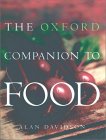
Alan Davidson's Oxford Companion to Food has been over 20 years in the assembling, but here it is; and it is superlatively worth the wait. In fact, superlatives fall silent. A huge and authoritative dictionary of 2,650 entries on just about every conceivable foodstuff, seasoning, cuisine, cooking method, historical survey, significant personage, and explication of myth, it is supplemented by some 40 longer articles on key items. Davidson himself (no relation to this reviewer) contributes approximately 80 percent of the 2,650 entries, thereby guaranteeing high levels of erudition, readability, and deadpan feline wit. Since this is a monument intended to last, nothing so frivolous as a recipe is included. A decision taken early in the development of the project to abjure issues whose significance is largely topical has also ensured an agreeable high-mindedness - nothing on those crucial but essentially dreary topics of BSE and GM foods, for example.
The Oxford Companion to Wine
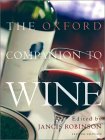
This book is as far removed from that fate as a Petrus is from a White Zinfandel!
At least once a week I have opened up this gorgeous wine tome and looked up the answer to a question, or read more about a particular wine I was enjoying. With over 3,000 entries to choose from, you can explore the ancient roots of wine in Iraq and Egypt, or learn about new vine-growing techniques winemakers are using in Washington State. The information is clearly written, well illustrated, and not overly technical.
Jancis Robinson, the editor of the tome, is well known in the industry for her knowledge and fluency in wines of all types. Combine her amazing knowledge with fantastic photographs of each wine region, and even reviews of various personalities in wine, and you have a book that you'll keep on the coffee table and actually read often! Be warned - you can lose guests in its pages for hours.
The book is great for a beginner. Confused about Beaujolais Nouveau? Want to know how a White Zinfandel differs from a Red Zinfandel? The Oxford Companion to Wine has clear, concise descriptions of all wine types, explaining their histories, their characteristics, and where they're found now.
The Companion is also a boon for experienced drinkers. It goes into the fine details of how wines are grown, and how various winemakers use different techniques to bring out the best in their particular grapes. There are maps of wine regions, and insights into what makes certain wines unique.
Great as a gift for your favorite wine drinker, but buy one for yourself, too! The book is a wonderful reference tool to have around the house. With its lovely photos of France, Italy, and Spain, it serves as a wine-lovers guide to places to visit or dream about, and wines to drink while doing so. Highly recommended as the only wine book you should ever need.
The New Food Lover's Companion

Amazingly comprehensive encyclopedia of everything you ever wondered or will need to know about culinary terms and ingredients.
This book just keeps getting better and better with each edition. It's thorough and written in a friendly, non-esoteric style. There seem to be a lot more ethnic terms in this third edition, and the appendix area has loads more info. I particularly like the pasta glossary and the huge ingredient substitution chart. My wife, who bakes, likes the chart on pan substitutions so she can make sure she's using the right-size pan. This new Food Lover's Companion gets two huge thumbs up from Chicago. Anyone who loves food should have it!
The Pie and Pastry Bible

Reading about the ins and outs of baking the perfect, flaky pie crust is a little like reading about how to achieve the perfect golf swing: the proof is in the doing. And it often takes a remarkably intuitive reader to understand exactly what the author is getting at. Not so the work of Rose Levy Beranbaum, the author who gave us The Cake Bible. If ever there was a cookbook author who could place her hands on top of yours, putting you through the proper motions, helping you arrive at just the right touch, Beranbaum is the one.
The Pie and Pastry Bible begins with the crust. The author confesses right up front that 21 years ago, when she first began her quest for the perfect crust, "it was a complete mystery to me." She wasn't looking for a once-in-a-lifetime experience, but something she could consistently turn out at a moment's notice. The ideal pie crust, she writes, "has light, flaky layers, but also ... is tender, and nicely browned, with a flavor good enough to eat by itself."
In a book that stretches to about 700 pages long, her favorite pie crust is the first recipe: Perfect Flaky and Tender Cream Cheese Pie Crust. Typically, Beranbaum lists the ingredients by measure and weight for three separate sizes of pies, then gives instructions for the food processor or by hand.
After 70 pages of pie crusts, tart crusts, and crumb pie crusts of every imaginable make and combination, Beranbaum starts with fruit pies. Her first (of many) detailed charts shows exactly what her ratios are of fruit to sugar to cornstarch. Then each recipe (start with The Best All American Apple Pie) includes pointers for success as well as several variations on the theme. Under the headline "Understanding," Beranbaum goes that extra mile by taking the trouble to explain just why something works the way it does.
If you are only going to own one cookbook for pie and pastry recipes of every imaginable stripe and combination, you can't go wrong with this one. It's the Bible, after all.
The Pie and Pastry Bible is your magic wand for baking the pies, tarts, and pastries of your dreams - the definitive work by the country's top baker.
" More than 300 recipes, 200 drawings of techniques and equipment, and 70 color pictures of finished pies, tarts, and pastries
" Easy-to-follow recipes for fruit pies, chiffon pies, custard pies, ice-cream pies, meringue pies, chocolate pies, tarts and tartlets, turnovers, dumplings, biscuits, scones, crostadas, galettes, strudel, fillo, puff... Ah!
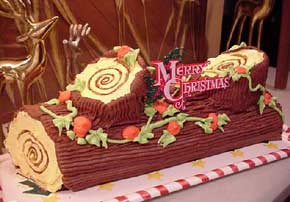
Chocolate Desserts
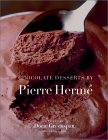
Absolument Delicieux, Decadent, Mais Non Difficile!
While the photos in this wonderful book are enough to make your mouth water, reading the fantastic descriptions will force even the most uninventive baker to hop in his/her car down to the nearest gourmet specialty shop and purchase a supply of Valrona's sumptuous dark chocolate, parchment paper and a fun assortment of accoutrements that would please the most well-turned out pastry chef. Those who have never used a pastry bag, need not panic; the results are well-worth the process. The recipes are fun and fantastic, the tastes, subtle and the step-by-step directions, complete with Pierre's sidebar tips and suggestions, foolproof. The book is divided into different sections focusing on Cakes, Cookies, Tarts, Custards/Mousses, Truffles/Candies, Ice Cream/Frozen Desserts, Hot and Cold Drinks. The book is prefaced by a brief essay on what you can expect from the book and finished to perfection with Pierre's base recipes and a dictionary of terms, techniques, equipment and ingredients with a source guide. I especially enjoyed concocting Pierre's Chocolate Macaroons, the Financiers, and the Moist and Nutty Brownies. The total chocolate experience of the Original Hot Chocolate is Proustian, (with or without the madeleine)reminiscient of that served in a Parisian specialty shop in a tiny cup. The books presentation alone would make a lovely gift even for the coffee-table brand of patisserie chef, but for those who are a little more adventuresome, there is much pleasure to be derived from this little gem.
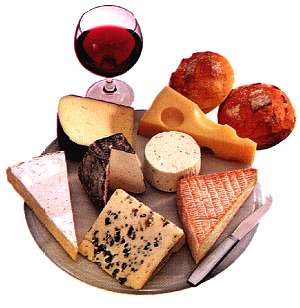
Mamma mia!
The Italian Baker
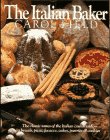
Italy's breads are ``expressions of an earthy culture that still talks about its most fundamental experiences in terms of bread. . . . A down-to-earth man with a real heart of gold is described as `buono come il pane'good, like bread,'' observes Field (The Hill Towns of Italy). Her book of baked goods is packed with recipes for breads made with herbs, mushrooms, fruits and cheeses; traditional loaves; breadsticks and rolls; chocolate and holiday breads; pizza and focaccia; as well as strudels and tarts, cakes and cookies. There are even recipes for leftover breadcrostini, garlicky vegetable soup, apple cake. Included also are directions for kneading by hand, by mixer and by food processor; dry ingredients are measured by both volume and weight. In order to write this book, Field worked with bakers in different regions of Italy and watched women making bread for their families. She recreates here for the American baker authentic Italian tastes and textures. Her informed discussion of ingredients and methods and her engaging commentary on the role of bread in Italy's history make this an important book for bakers.
Number One Cookbook in My Kitchen
I am enjoying two weeks off at Christmas and went "crusing" on the net to find recipes for Panetone (festive Italian Christmas Bread) and found this site with the lavish comments and laudatory praises for Carol Field's book. I also found a "doable" panetone recipe I could conjure up. After a visit to a local bookstore and finding this "treasure" I am hooked! I bought it on Sunday and it's now Thursday and I have read over 100 pages - not only for the tasty recipes, but the detailed, insatiable descriptions of the regions, and history of the recipe at hand. Never have I had a cookbook that I could rave about like this one. After spending 10 years in Vicenza and Napoli with my Army husband, I recognize the regions she so adeptly describes and the foods that complement the plates on the table. Do not miss this one, it is a rare jewel. Thank you Carol for the best christmas present I got this year!
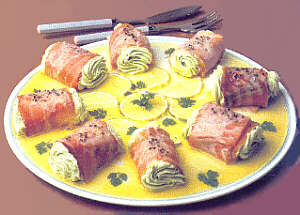
The Professional Chef
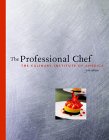 Recognized as the definitive cooking school textbook, the Culinary Institute of America's The Professional Chef is also the perfect guide for independent study at home. More than 1,000 pages are packed into the voluminous seventh edition, with information and recipes designed to teach technique. It is so comprehensive, it could be the only cookbook you need to own. Almost guaranteed to answer any question you could possibly imagine, The Professional Chef is one of the most useful reference books ever written for the kitchen.
Recognized as the definitive cooking school textbook, the Culinary Institute of America's The Professional Chef is also the perfect guide for independent study at home. More than 1,000 pages are packed into the voluminous seventh edition, with information and recipes designed to teach technique. It is so comprehensive, it could be the only cookbook you need to own. Almost guaranteed to answer any question you could possibly imagine, The Professional Chef is one of the most useful reference books ever written for the kitchen.
|
